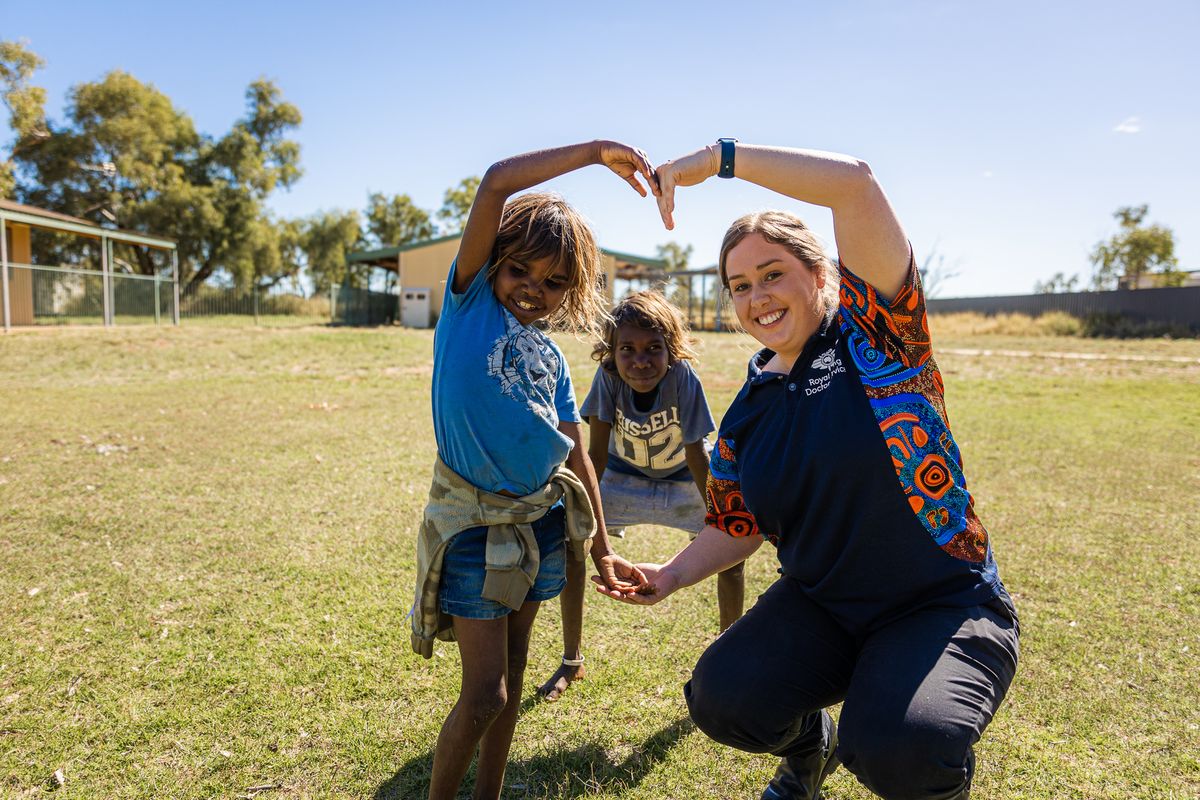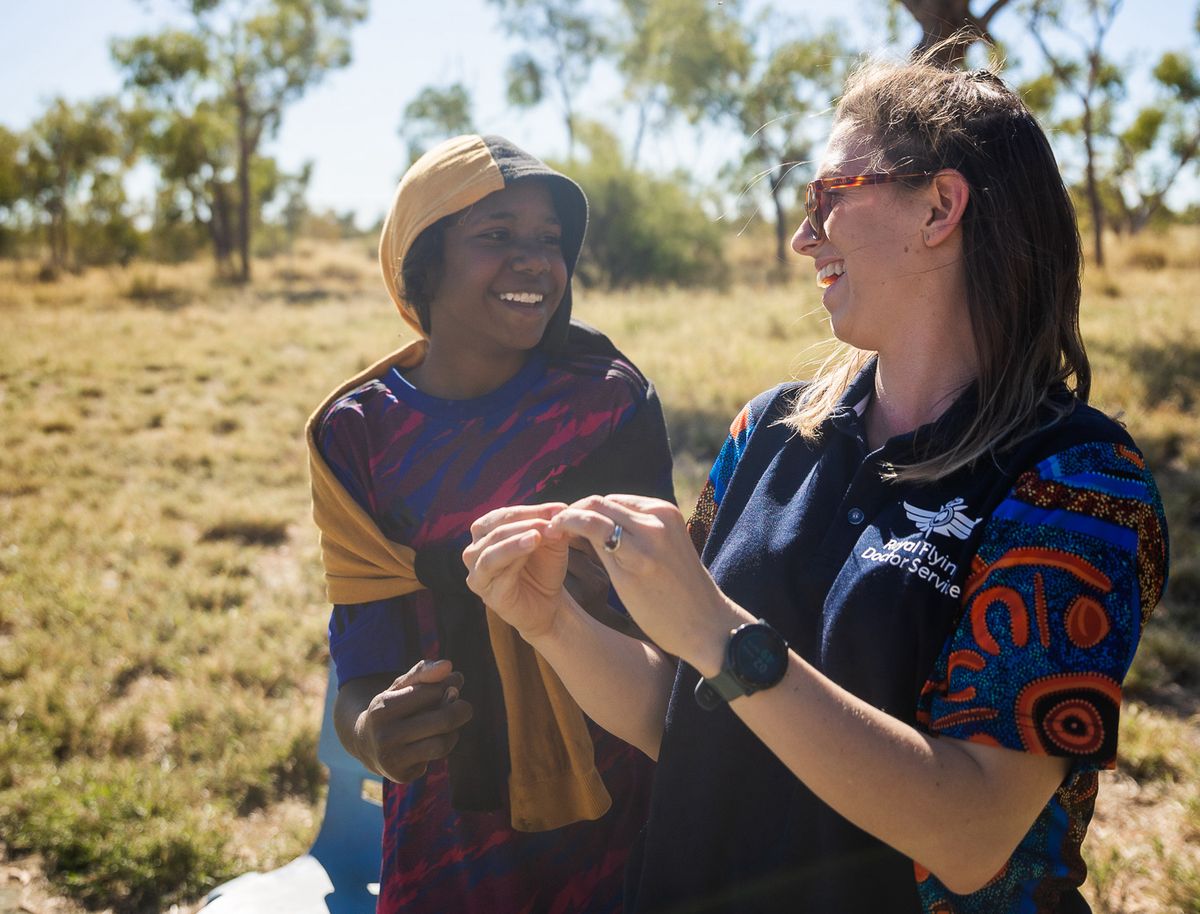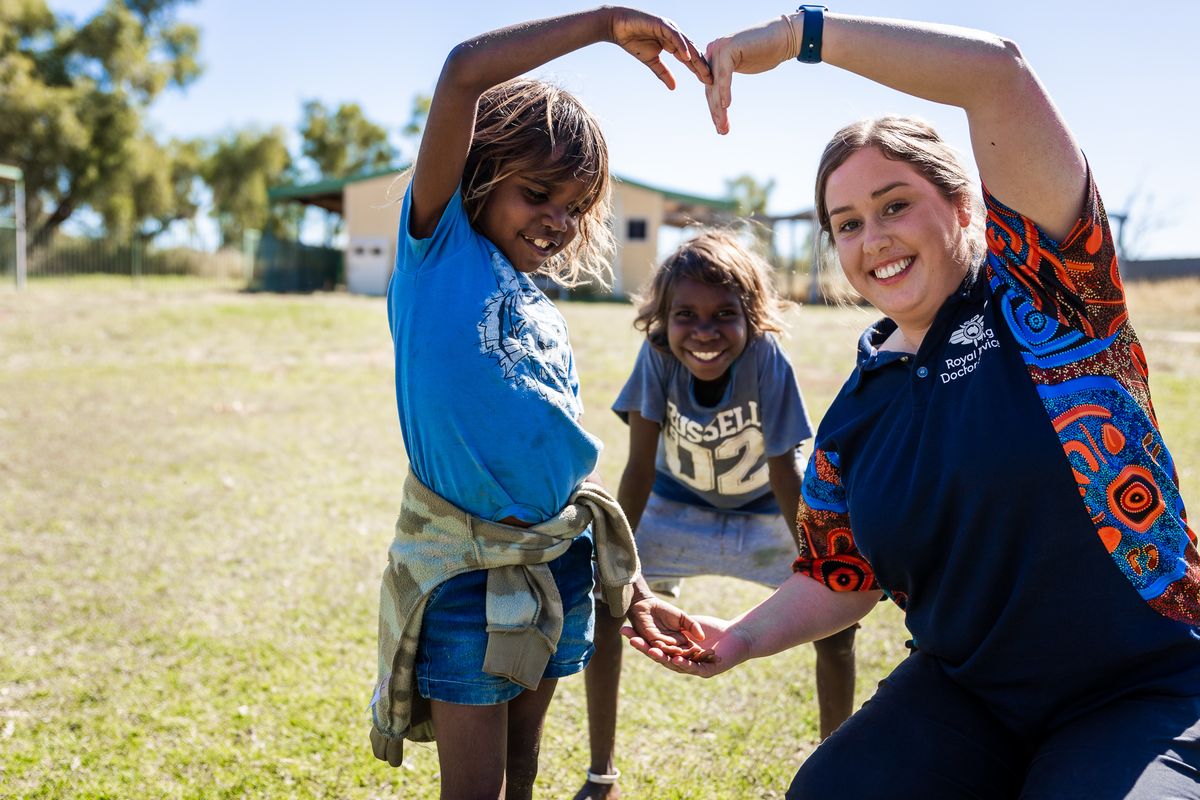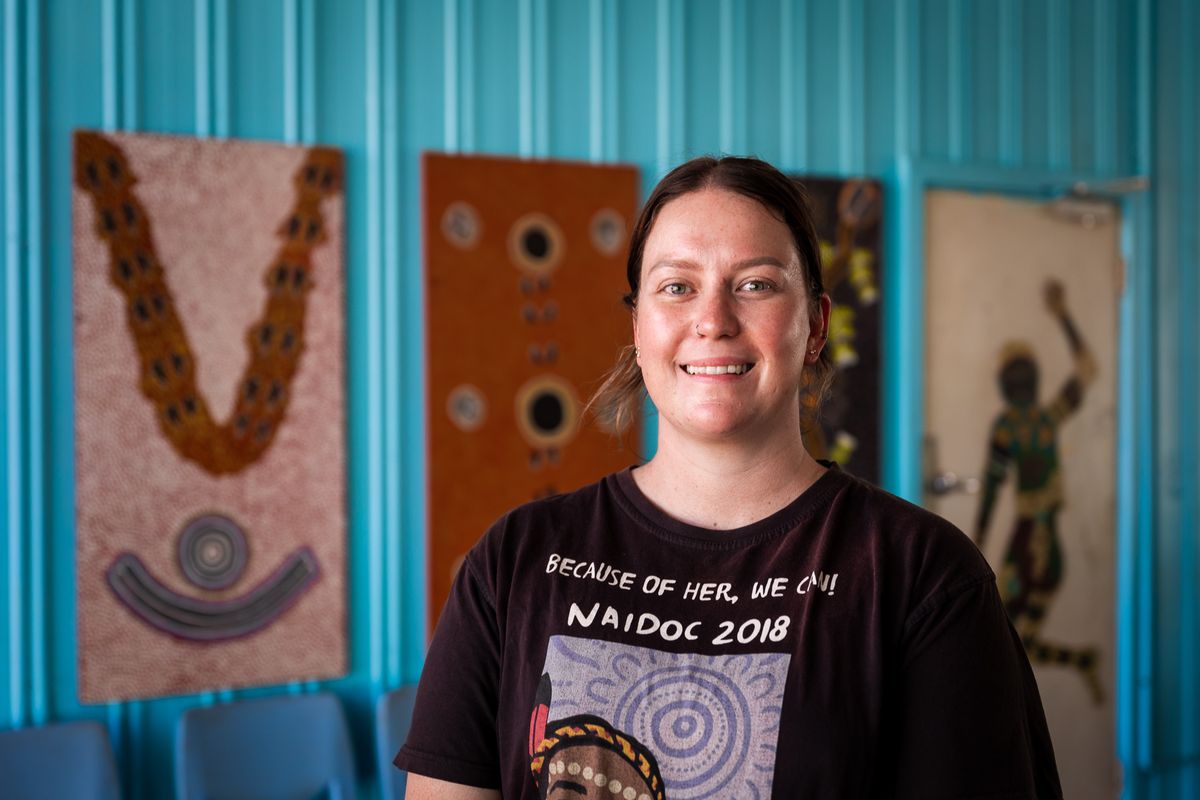
“What do you think if I talk to that Flying Doctor mob? Do you think you’d be okay to have yarn with them?”

These are the words of Hannah Case, a school counsellor who lives and works full-time in the Aboriginal community of Willowra in the Central Desert, where she has been the sole mental health practitioner for several years.
Historically, remote communities like Willowra, located on Warlpiri Country more than 400 kilometres north of Alice Springs, have had little to no access to mental health outreach services.
“Willowra has anywhere between 400 to 500 people based out here and our average numbers at the school are about 30 students a day,” Ms Case said.
“Willowra has a strong sense of community because it’s quite small, but it’s also really isolated and we don’t have access to a lot of services out here, particularly around mental health for young people.
"Up until November last year, we didn’t have mobile phone reception, so telehealth wasn’t an option and even then, young people don’t have access to phone credit to do online counselling.”

As a silent mental health crisis continues its deepening hold in the remote heartlands of Australia, the RFDS is trying to stop it in its tracks.
Every week, the RFDS Mental Health & Wellbeing team out of Alice Springs hits the road to visit Central Desert communities, offering one-on-one support, running group activities and spreading awareness in aims to tackle the unfolding mental health crisis.
Today, the Flying Doctor team visits Willowra regularly, staying in community for days at a time.
Building on the school’s established wellbeing programs, the team has been developing relationships in community over the last 12 months with teachers, families and students of all ages.
“We reached out to the Flying Doctor when we had some increasing concerns for young people in community around their mental health and how they were managing that,” Ms Case said.
“Prior to the Flying Doctor coming out, we didn’t have any mental health resources other than myself out in community. As one person servicing a whole community, there’s only so much you can do, but when you have a team out here you can reach, access and support more people.
“We do ‘nights in’ for our senior students, where we talk about mental health, relationships and personal safety, as well as one-on-one counselling or small groups sessions with the kids around behaviour management, emotional regulation, and recognising feelings.”

It is no secret the mental health landscape in remote Australia is bleak. Those living in very remote communities of the country have far shorter lives than city-dwellers and are more than twice as likely to die from suicide and other preventable illnesses, according to the Australian Institute of Health and Welfare.
As a young person, the situation is worse. In the last 10 years, 15- to 24-year-olds have had the greatest increase in suicide rates. It has been understood for several decades that there is a ‘ripple effect’ in young people, in which suicide tends to appear in clusters of young adults who share social networks.
When it comes to tackling the stigma associated with reaching out for help, RFDS Mental Health Clinician Hannah West said working with schools to overcome ‘shame’, a deeply embedded cultural construct in Aboriginal communities, is the ideal setting to start.
“It’s a privilege to work with kids from such a young age and begin building their knowledge of their mental health and wellbeing in a community where there is a such strong connection to culture and where many wellbeing practices are already being shared.”
Ms West said connecting with the school had opened opportunities for broader mental health consultations with community members and those employed in the community, such as the school staff themselves.
“Living remotely exacerbates mental health challenges that already exist, and it can create new ones as well,” Ms West said.
“When we’re able to support the professionals who come out to live in community and have such important roles in the lives and the wellbeing of so many community members, the flow-on effect means we’re helping so many more people than just the individual we’re working with.
“Willowra is a special community, but also a community that’s experienced a lot of hardships and challenges. Being able to walk into community and be recognised as part of a service that offers so much to so many people is a real privilege.”

For Ms Case and the local school staff, it’s been fulfilling to see students become so willing to engage with the RFDS team and begin opening up about their wellbeing.
“When it comes to mental health in Aboriginal communities, it’s really important to have cultural safety,” Ms Case said.
“Aboriginal people have a lot of strength and resilience they can draw on through spiritual connections, elders, ancestors and knowledge that has been passed down through generations.
“For the clinical aspect of mental health support to be effective, it needs to be understanding of these different links.
“Out in community, it can always take a while to build relationships, particular with a new service, but with the RFDS, the young people are so willing to engage.
“You can say to a young person, ‘I’m a bit worried about you, what do you think if I talk to that Flying Doctor mob? Do you think you’d be okay to have yarn with them?’ and they’re saying, ‘Yes’ because they’re feeling like it’s a culturally safe service.”
Ms Case hopes the collaboration between the school and the RFDS will continue to create an environment where young people feel safe actively reaching out for support when doing it tough, either for themselves or for schoolmates and loved ones.
“I’d just like to see a continuation of the teamwork and the relationships that have been built so as this current generation of students grows older, they’ll be able to say to the next young generation, ‘Hey this isn’t something to be ashamed of – these are the people who can support you.’”

Find out more about our Mental Health & Wellbeing services.

